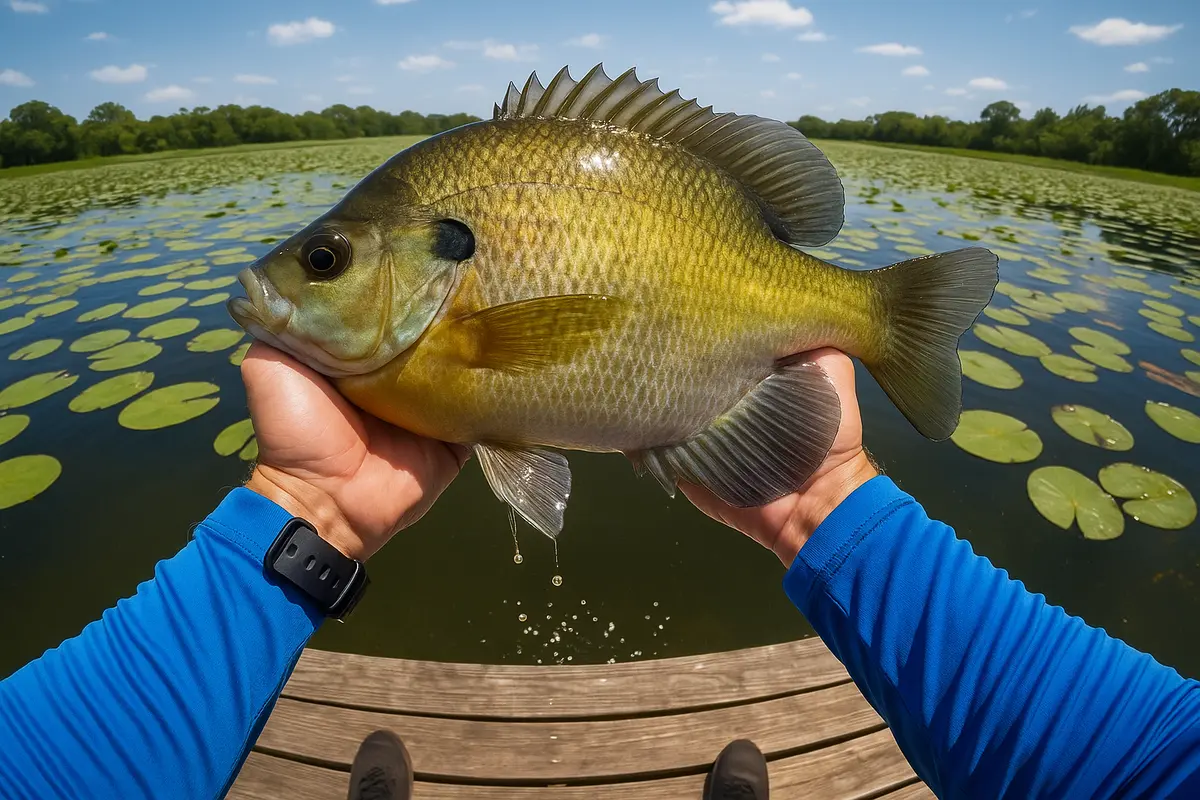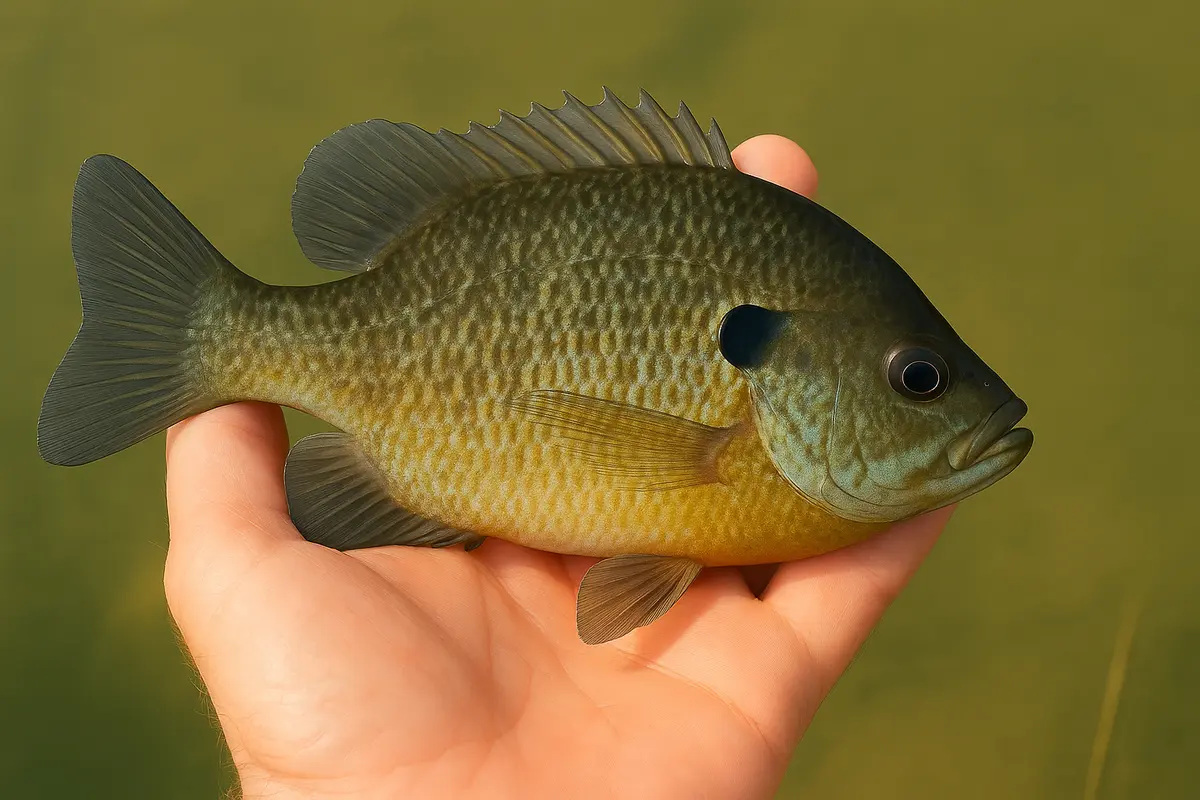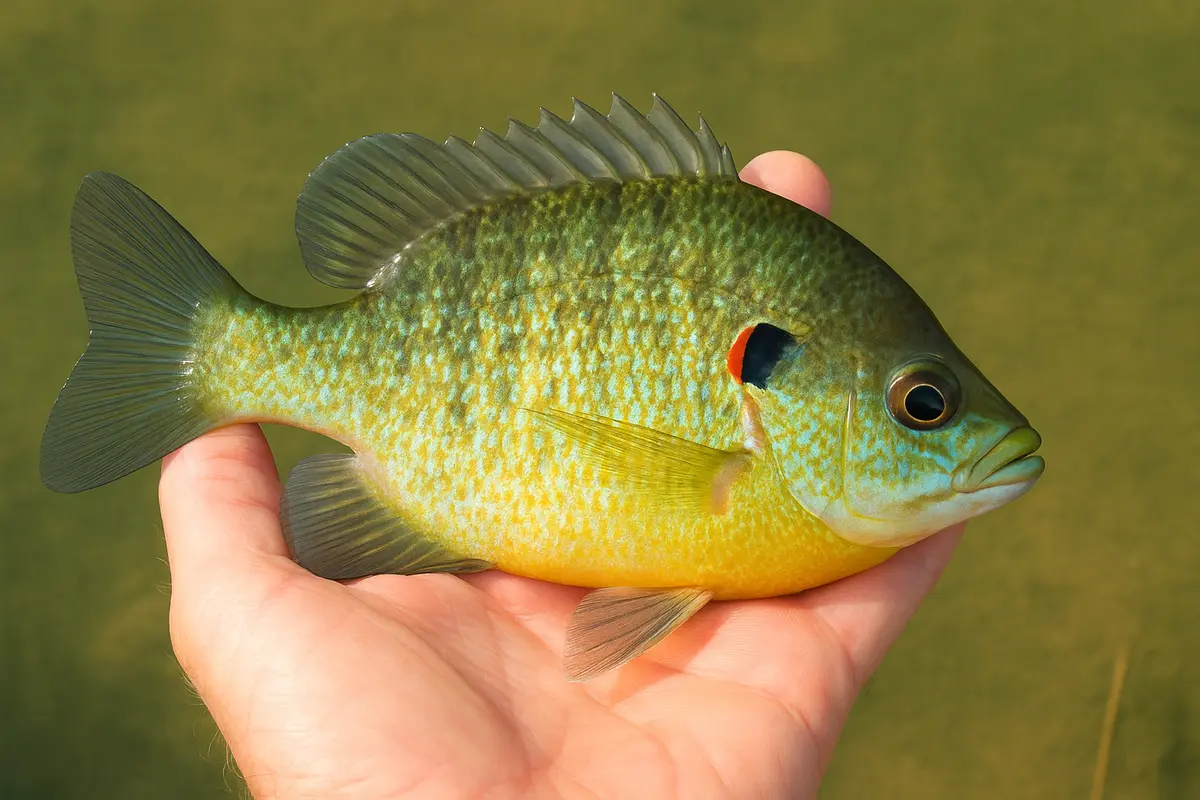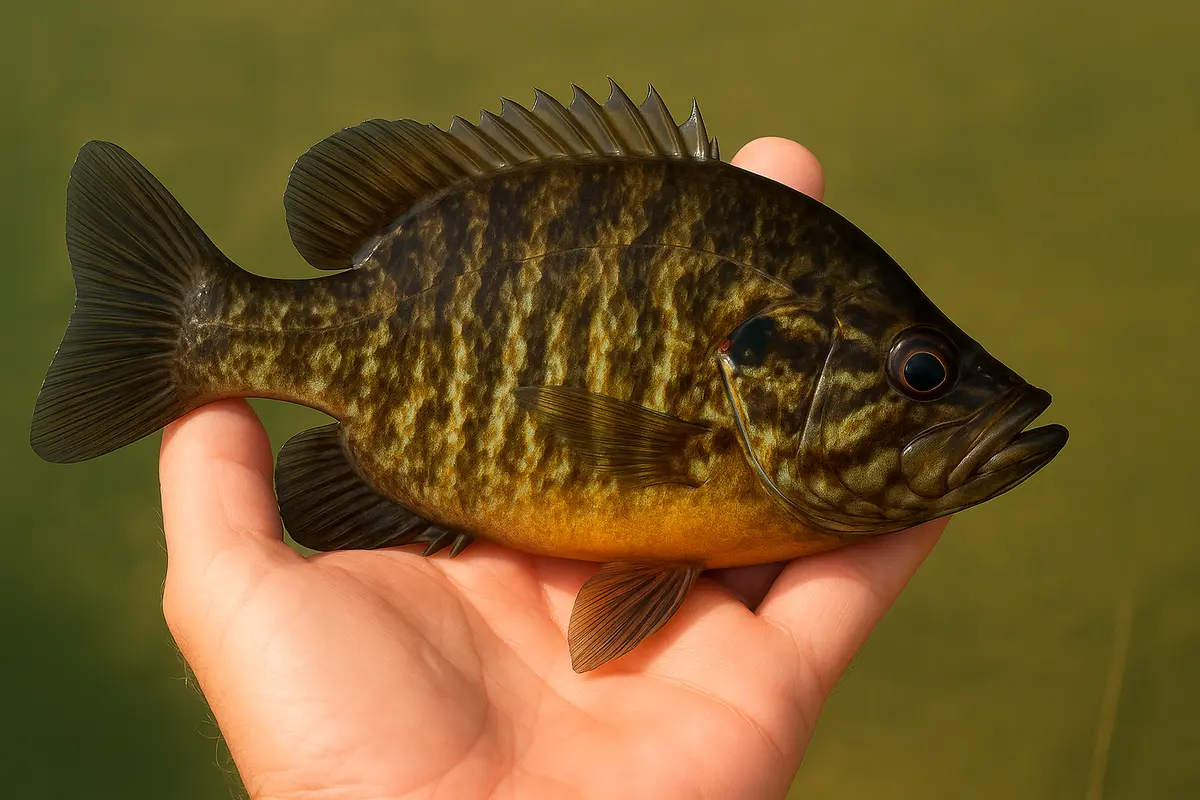Bream : Types
Bream Fishing

Bream, often a catch-all term in the U.S. for several species of freshwater sunfish, are among the most accessible, abundant, and fun fish to catch. Whether you're a child with a cane pole on a farm pond or a seasoned angler exploring southern reservoirs, bream fishing is a beloved tradition across the country.
📚 What is a Bream?
In the U.S., "bream" refers to various sunfish species in the family Centrarchidae, primarily:
- Bluegill
- Redear Sunfish / Shellcracker
- Pumpkinseed Sunfish
- Green Sunfish
- Warmouth
- Longear Sunfish
- Hybrid Sunfish (often bluegill x green sunfish or bluegill x redear)
Though these are all "sunfish," anglers commonly refer to them generically as bream or brim, especially in the southern U.S.
🐟 Common Types of Bream in the U.S.
1. Bluegill

- Distribution: Nationwide, especially in the South and Midwest. Found in ponds, lakes, rivers, and reservoirs.
- Lifestyle: Prefers warm, vegetated waters. Nests in colonies during spring and early summer.
- Typical Size: 4–8 inches, 0.25–0.5 lb.
- Trophy Size: 10–12 inches, over 1 lb (a "bull bluegill").
- Unique Trait: Males turn vibrant blue and orange during the spawn and fiercely guard nests.
2. Redear Sunfish (Shellcracker)

- Distribution: Southeastern U.S., especially in states like Florida, Georgia, Alabama, and Texas.
- Lifestyle: Prefers deeper, clearer water. Feeds primarily on snails and other bottom invertebrates.
- Typical Size: 6–10 inches, 0.5–1 lb.
- Trophy Size: 1.5–2+ lb.
- Unique Trait: Named for their red ear flap and shell-crushing pharyngeal teeth. Known to eat invasive quagga mussels.
3. Pumpkinseed Sunfish

- Distribution: More common in the Northeast and Upper Midwest.
- Lifestyle: Prefers clear, shallow waters with gravel and vegetation. Often found in streams and small lakes.
- Typical Size: 4–6 inches.
- Trophy Size: 8–9 inches.
- Unique Trait: Colorful with iridescent blue-green and orange hues. A favorite for panfish artists.
4. Green Sunfish

- Distribution: Native to the central U.S., but widely introduced.
- Lifestyle: Tolerates murky water and even stagnant conditions.
- Typical Size: 4–7 inches.
- Trophy Size: 8–9 inches.
- Unique Trait: Aggressive feeders and often hybridize with other species. Large mouth for its size.
5. Warmouth

- Distribution: Southeastern U.S., found in swamps and weedy backwaters.
- Lifestyle: Ambush predator. Hides in structure, similar to bass.
- Typical Size: 5–8 inches.
- Trophy Size: 9–10 inches.
- Unique Trait: Looks like a cross between a bass and a sunfish. Large mouth and powerful fight.
🌍 Where to Find Bream
| State/Region | Common Species | Popular Fisheries |
|---|---|---|
| Florida | Bluegill, Shellcracker, Warmouth | Lake Okeechobee, St. Johns River, Farm ponds |
| Georgia | Bluegill, Shellcracker | Lake Seminole, Lake Sinclair |
| Alabama | Shellcracker, Bluegill | Lake Eufaula, Guntersville Lake |
| Texas | Redear, Bluegill, Green Sunfish | Sam Rayburn, Falcon Lake, stock ponds |
| Midwest | Bluegill, Pumpkinseed | Lake Michigan tributaries, farm ponds, inland lakes |
| Northeast | Pumpkinseed, Bluegill | Adirondack lakes, Maine rivers, small ponds |
| California/West Coast | Bluegill, Green Sunfish | California Delta, Clear Lake, farm reservoirs |
Bream thrive in:
- Farm ponds
- Backwater sloughs
- Reservoir coves
- Clear lakes with vegetation
- Rivers with slow pools and structure
🧬 Life Cycle and Behavior
- Spawning: Bream typically spawn in spring through early summer, depending on location. Bluegill may spawn multiple times. Males fan out beds in colonies and guard fertilized eggs aggressively.
- Diet: Insects, worms, small crustaceans, snails (for redear), and fish fry. Opportunistic feeders.
- Schooling: Most bream school by size. Larger individuals tend to be deeper or hold to structure.
🏆 What is a Trophy Bream?
| Species | Trophy Size (Inches) | Trophy Weight (lbs) |
|---|---|---|
| Bluegill | 10–12 | 1+ |
| Redear | 12–14 | 2+ |
| Pumpkinseed | 8–9 | 0.75+ |
| Green Sunfish | 8–9 | 0.75+ |
| Warmouth | 9–10 | 1+ |
Notably, some southern states stock hybrid bream which can grow faster and larger in managed ponds. The IGFA world record redear was caught in Arizona (Lake Havasu) and weighed over 6 pounds!
🎣 How to Catch Bream
🪱 Live Bait Fishing
| Bait Type | Best Use |
|---|---|
| Nightcrawlers | All-purpose, readily available |
| Red wigglers | Effective in ponds and creeks |
| Crickets | Especially deadly in summer months |
| Grasshoppers | Topwater bite in late spring |
| Mealworms | Winter and early spring fishing |
Technique:
- Use a small hook (#8 to #12)
- Suspend bait under a bobber
- Target brush piles, weed edges, and drop-offs
🎣 Lure Fishing for Bream
Small Lures
| Lure Type | Notes |
|---|---|
| 1/64–1/16 oz jigs | Marabou or soft plastic grubs |
| Inline spinners | Beetle Spins, Rooster Tails |
| Tiny crankbaits | Mimic small baitfish or insects |
| Poppers (topwater) | Early morning or calm water |
| Ice jigs (vertical) | Under docks or winter fishing |
Fly Fishing for Bream
| Fly Type | Presentation |
|---|---|
| Foam spiders | Topwater during warm months |
| Poppers | Summer mornings |
| Nymphs | Subsurface year-round |
| Woolly Buggers | Slow-strip around structure |
| Beadhead Prince | Drift near bottom |
Gear Recommendation:
- 2 to 4 wt fly rods
- Floating line with short leader
- Cast around pads, beds, or fallen trees
🎣 Cane Pole & Ultralight Setup
| Setup | Notes |
|---|---|
| Cane Pole | Traditional, fun, and effective in shallow water |
| Ultralight Rod | 5'–6' spinning rod with 2–6 lb line |
| Bobber Rig | Ideal for sight fishing or panfish nests |
| Tightline Setup | For deeper water or winter bite |
🧠 Tips for Catching Bigger Bream
- Fish Deep: Larger bluegill and redear often stay deeper, especially post-spawn.
- Skip the Bobber: Cast and retrieve a small jig or worm slowly along the bottom.
- Match the Hatch: Use bait or lures that mimic local forage—crayfish, snails, insect larvae.
- Fish Early or Late: Dawn and dusk often produce bigger bites and surface action.
- Go Stealth: In clear water, use light line and approach quietly.
🌟 Fun Facts About Bream
- Bluegill are the official state fish of Illinois.
- Redear sunfish can live over 7 years and develop complex pharyngeal teeth to crush hard shells.
- Bream can hear and detect vibrations, making noisy bobbers or splashes a turnoff in pressured waters.
- Hybrid sunfish are sterile, grow fast, and are common in stocked private ponds.
The World's Most Complete Fishing Resource
We're building the ultimate fishing encyclopedia—created by anglers, for anglers. Our articles are created by real experienced fishermen, sometimes using AI-powered research. This helps us try to cover every species, technique, and fishing spot imaginable. While we strive for accuracy, fishing conditions and regulations can change, and some details may become outdated or contain unintentional inaccuracies. AI can sometimes make mistakes with specific details like local access points, parking areas, species distributions, or record sizes.
Spot something off? Whether it's an incorrect boat ramp location, wrong species information, outdated regulations, or any other error, please use the "Help Us Improve This Page" section below. Your local knowledge makes this resource better for every angler.
Explore Related Topics
Discover more articles to deepen your knowledge
Curating articles for you...
Create your own Research Page using AI
Try our AI assistant for free—sign up to access this powerful feature